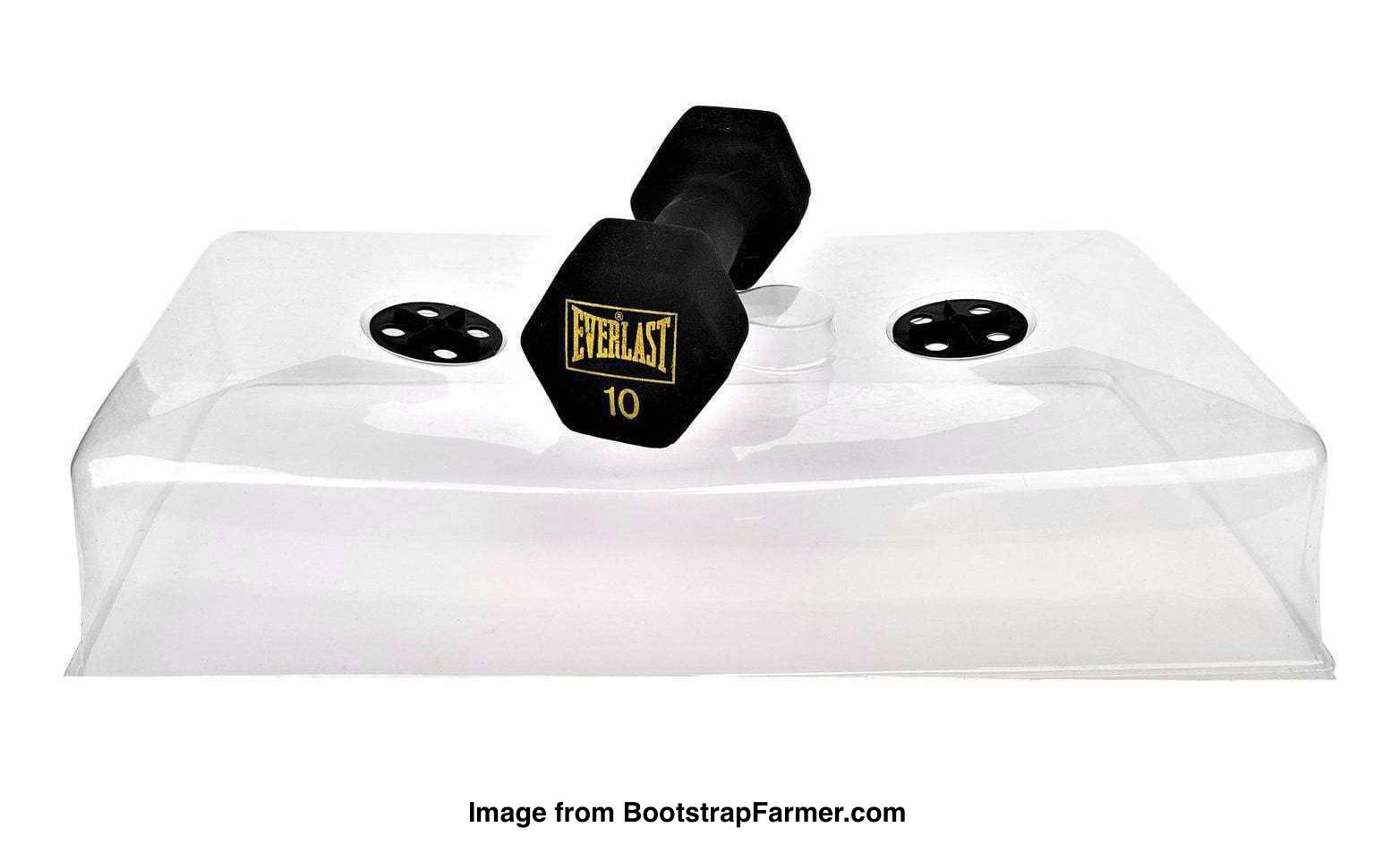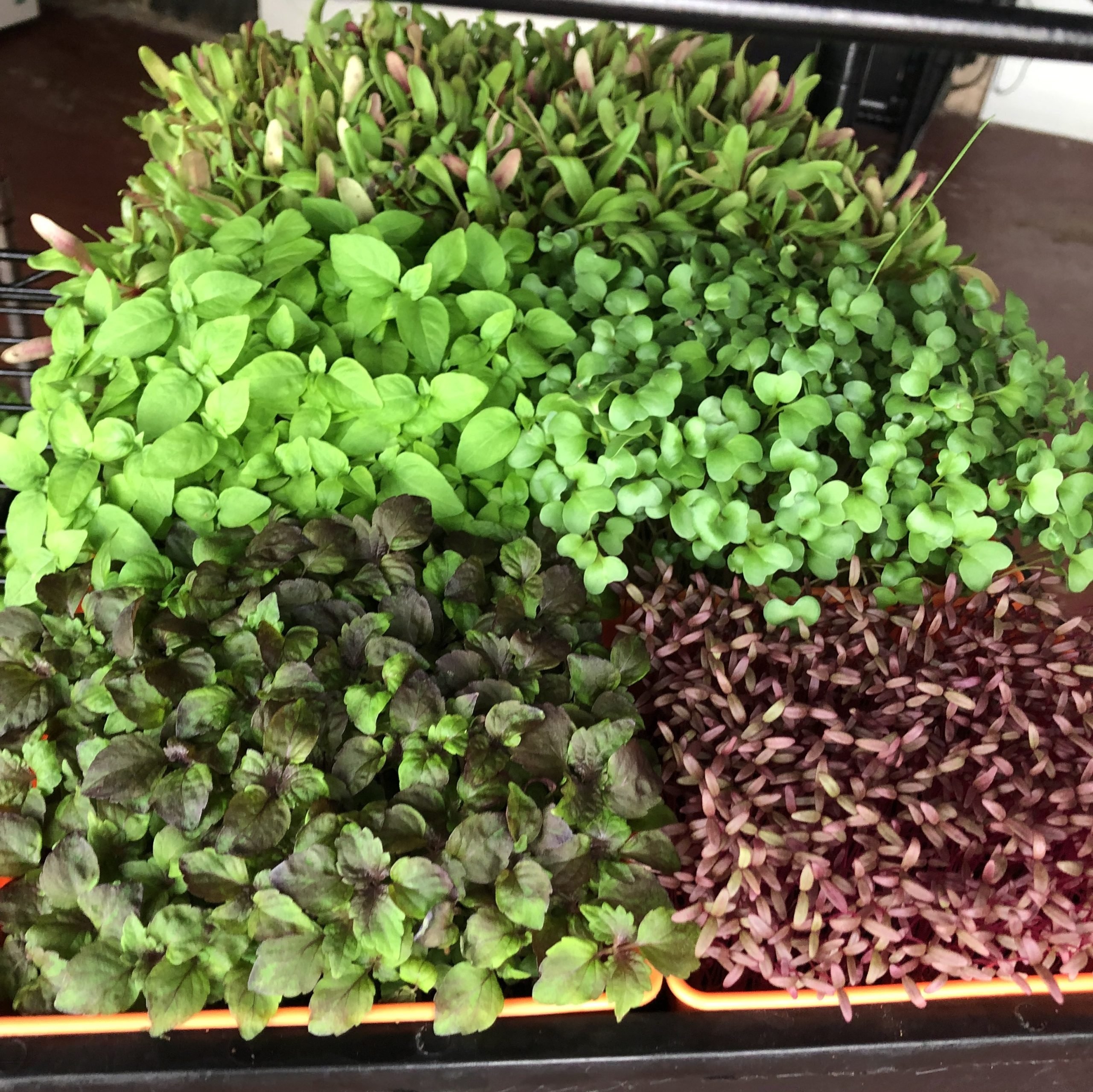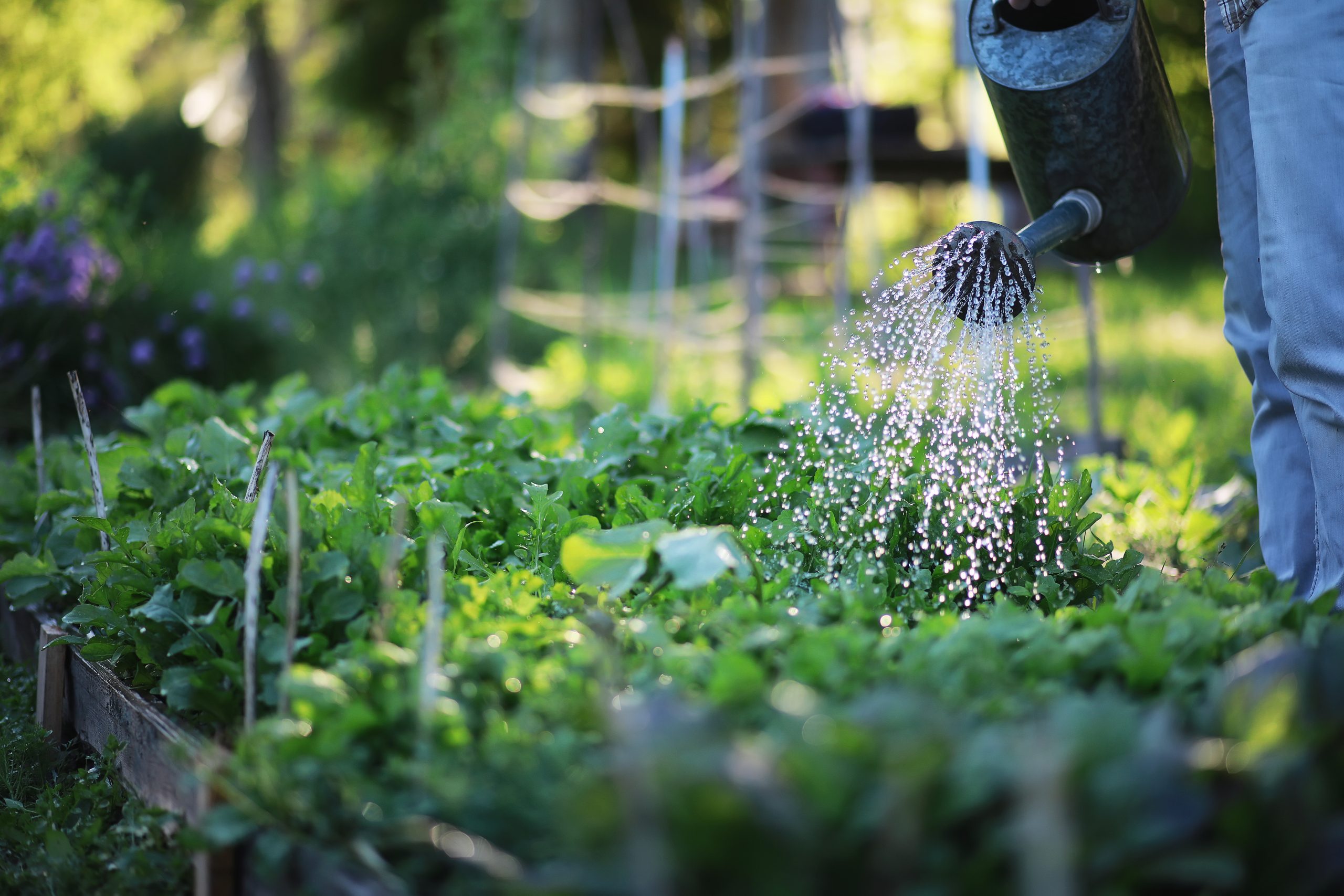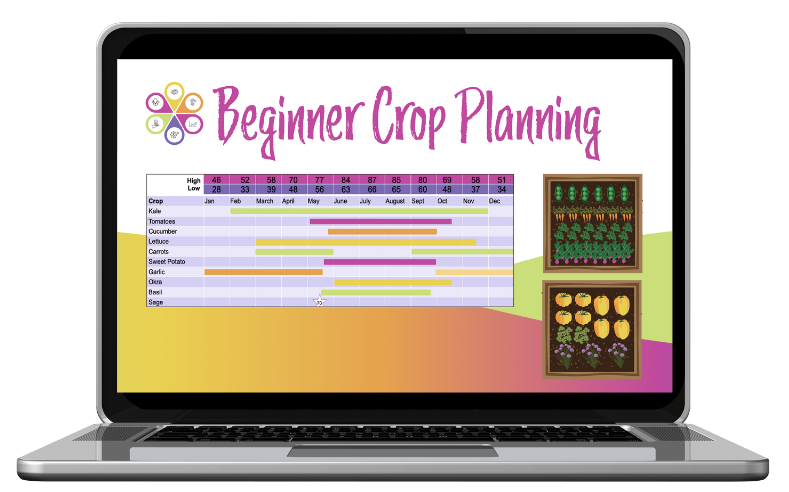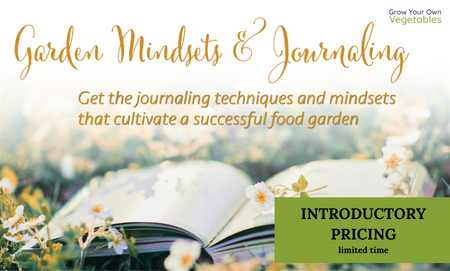2023 Holiday Garden Gift Guide
The Grow Your Own Vegetables Elves have been busy recently. They took a break from the garden and gathered all kinds of garden goodies together for our 2023 Holiday Garden Gift Guide.
This is the third year that the GYOV Elves have worked tirelessly to create this guide for you to help with the holiday shopping for your garden friends and family—and YOURSELF!! 🎁
This year’s guide is better AND bigger than ever and is filled with items that are sure to work for anyone on your list—no matter where they live—no matter their available space.
Years ago, when you said garden, it conjured images of a plow, tiller, or tractor creating rows and rows of turned dirt on an acre or more of land. However, today so many options exist that allow you to garden pretty well ANYWHERE!
2023 Holiday Garden Gift Guide highlights some of these options, which make great gift ideas.
With one Garden Tower 2, you only need 4 square feet of available space—indoors or out—to vertically grow up to 50 plants and vegetables! The tower is great for small patios, balconies, or even rooftops outdoors. Indoors, it’s a great fit for that corner in the kitchen that you’ve never known what to put there.
The 43” tower has multiple planting pockets for easy planting and fast harvesting and rotates 360° for optimized sun exposure and growing in tight spaces. Made in the United States from 100% UV stable food-grade high-purity HDPE plastic, the Garden Tower 2 is backed by a 5-year manufacturer warranty.
Almost any vegetable or herb can be grown in the Garden Tower 2. It is the perfect solution for growing lettuces, kale, chard, peppers, and so much more. Recently named the “World’s Most Advanced Container Garden,” it eliminates weeding, electricity, and most water loss associated with conventional gardening.
See page 12 in the 2023 Holiday Garden Gift Guide for more information about the Garden Tower 2.
The Farmstand Nook
Looking for another option to grow indoors that allows you to grow anywhere you choose—no sunlight required? The Farmstand Nook is your answer.
With the Farmstand Nook, you can grow up to 20 plants of herbs, greens, and more all year long. The sleek compact design includes integrated LED lights (why no sunlight is required), a water pump for self-watering, and a water-resistant floor mat, allowing you to place it anywhere in your home such as within steps of your kitchen stove.
The specifically designed Grow Sleeves and Grow Cups allow for easy maintenance of your plants. Each Grow Cup features a notch to hang Plant ID labels that contain the name of your plant, the ideal harvest date, and an icon indicating the best location to place the plant on your Farmstand Nook for the best results.
An additional bonus feature of the Farmstand Nook is the included Digital Smart Timer, which allows you to automate and remotely update the watering and lighting systems through the Farmstand Nook’s app. This means that you can go on vacation, and your plants will continue to thrive during your absence.
See page 9 in the 2023 Holiday Garden Gift Guide for more information about the Farmstand Nook.
The RailScape Plant Clips quickly and easily turn your railing—inside or out—into a floating vertical garden. They are tool-free and super easy to install. In addition, they are also wind-resistant, forward tilt-proof, and rust-resistant, making these clips a perfect solution to garden on a small balcony.
With two different size options, the RailScape Plant Clips work on metal, wood, or vinyl rail posts. The clips are capable of supporting up to 15 lbs at any elevation (up to 25 lbs at the foot of the railing) and hold pots that are 9-10” in width. Turn any railing in your home into a beautiful healthy vegetable or herb garden with the RailScape Plant Clips.
See page 12 in the 2023 Holiday Garden Gift Guide for more information about the RailScape Plant Clips.
Vivosun Grow Tents
Do you not have any outdoor space available for gardening but maybe have a free room or garage available indoors? Vivosun Grow Tents are a great solution to be able to still grow fresh vegetables and herbs for your dinner table.
Available in a variety of sizes, the Vivosun Grow Tents allow you to select the size that meets your growing needs and space availability. Their design creates a reliable, stable growing environment that puts you in control of the light, temperature, humidity and soil conditions. With multiple chambers, you can keep your delicate seedlings separate.
See page 8 in the 2023 Holiday Garden Gift Guide for more information about Grow Tents.
The Raised Bed Grow Bags from Bootstrap Farmer are perfect for your growing needs. If you live in an area with less-than-quality soil or are renting your place and not allowed to do a traditional garden, these Grow Bags are a cost-effective alternative.
Made from food-safe recycled plastic and felt, the Grow Bags should last three years under normal environmental conditions, making them a great temporary garden solution. The Grow Bags—available in 100-gallon and 200-gallon sizes—have reinforced handles to make transport easy and are designed to prevent heat build-up, drain excess water, and allow soil aeration.
See page 6 in the 2023 Holiday Garden Gift Guide for more information about the Raised Bed Grow Bags.
Walk-In Greenhouse
Looking for an option to garden all year round? A quality Walk-In Greenhouse allows for a longer growing season, no matter where you live. Tractor Supply offers a high-quality 6’ x 12’ Walk-In Greenhouse for a great price. This item creates an internal environment that provides a productive growing location for any vegetable or herb that you want to grow.
With a durable aluminum, rust-resistant frame, this Walk-In Greenhouse is wind resistant up to 30mph. Polycarbonate panels diffuse sunlight, eliminating the risk of plant burn and shade areas. It includes two large adjustable vents so that you can give the plants inside ventilation for longer growing into the season.
See page 9 in the 2023 Holiday Garden Gift Guide for more information about the 6′ x 12′ Walk-In Greenhouse.
Now that you have found the right solution for you to grow fresh vegetables and herbs indoors or outdoors, you need a great way to provide the water that your plants need. The Athena Rain Barrel is a great way to collect rain in style and have water at the ready when you need it without increasing your utility bill.
This beautifully designed and durable rain barrel is made from resin and withstands harsh temperature changes. The Athena Rain Barrel will not chip or fade, and the quality brass spigot allows easy access to the water contained within the 50 gallon barrel.
With the Athena Rain Barrel, you have water for your growing plants while also helping the environment. The barrel comes with a two year manufacturer warranty.
See page 3 in the 2023 Holiday Garden Gift Guide for more information about the Athena Rain Barrel.
Handwoven Cotton Macrame Hanging Chair
After setting up your alternative growing solution, it’s time to relax. A Macrame Hanging Chair is a great way to set back and enjoy the fruits—or veggies—of your labor.
The chair is made from handwoven cotton in a pale pretty color that blends with any decor. The base is 26” in diameter and has a weight capacity of 250 lbs.
See page 4 in the 2023 Holiday Garden Gift Guide for more information about the Macrame Hanging Chair.
These are just a few of the many great gift ideas in the 2023 Holiday Garden Gift Guide. Don’t wait to download your copy and start shopping for all your garden loving friends and family. Any of the items can be ordered and shipped directly to the receiver, if they don’t live close by.
In addition, you will find all Grow Your Own Vegetables courses in the gift guide on sale through the end of the year. Our garden courses make a great gift for those garden friends and family far away because you simply provide us with their name and email, and we take care of the rest. It’s a gift whose value in near-ending!
It’s definitely holiday 🌿 thyme in the garden!
NOTE: This article contains affiliate links and Grow Your Own Vegetables, LLC may be compensated when you click and purchase through the links above. By purchasing through these links, you’re supporting our mission to help green the planet and create food stable communities across the globe. We only recommend products we LOVE and that help growers on their quest for a fresh food lifestyle.















